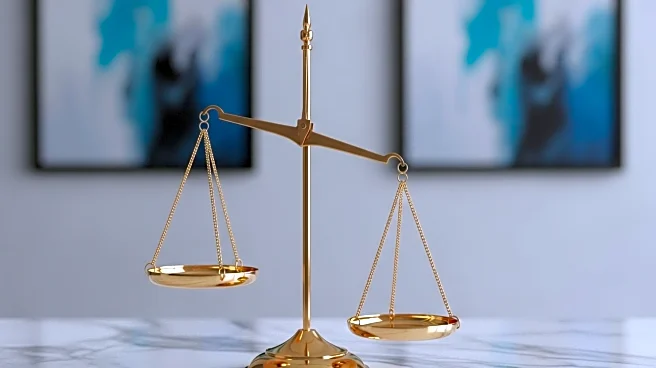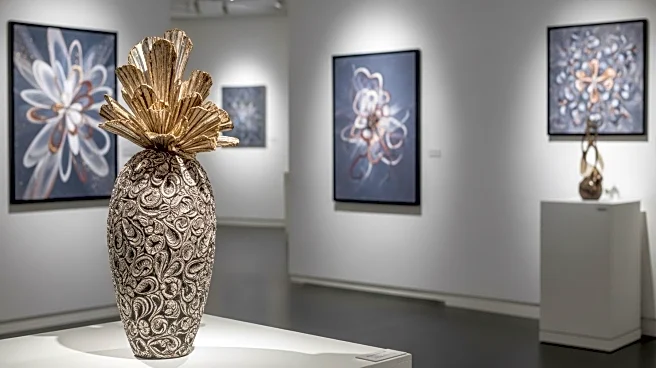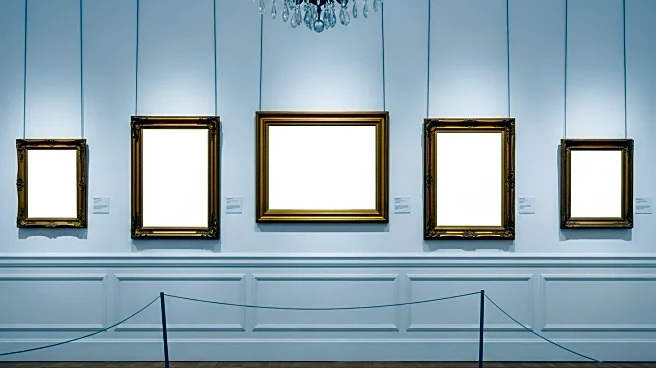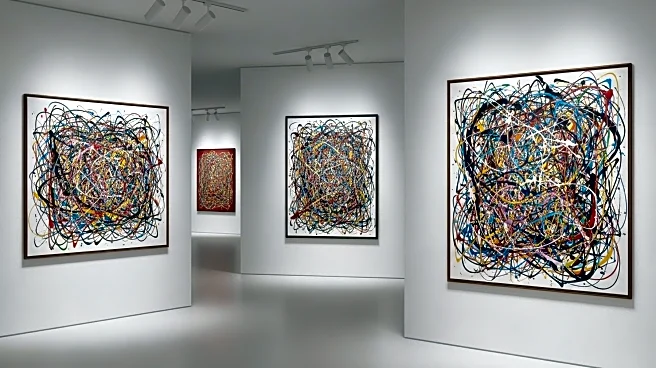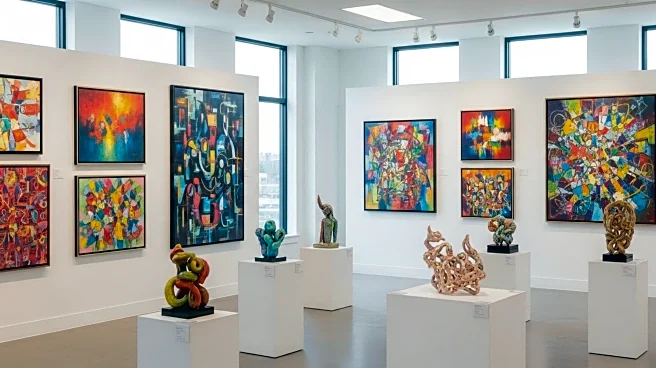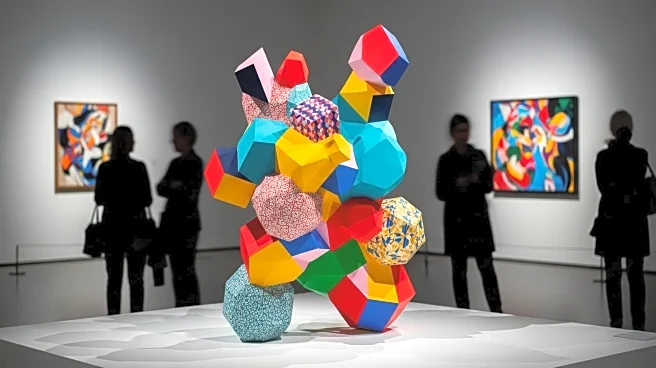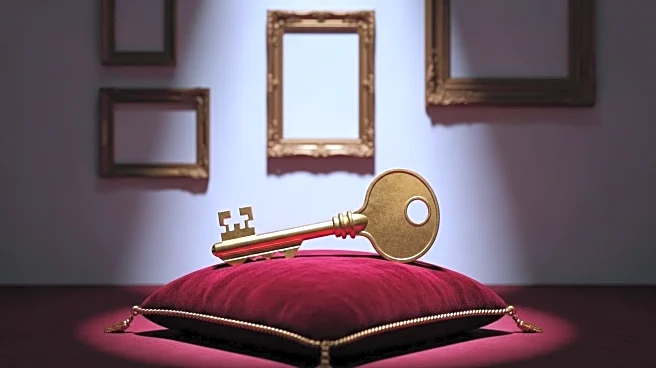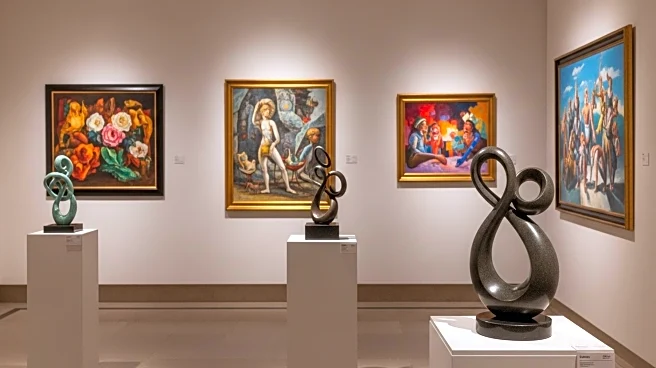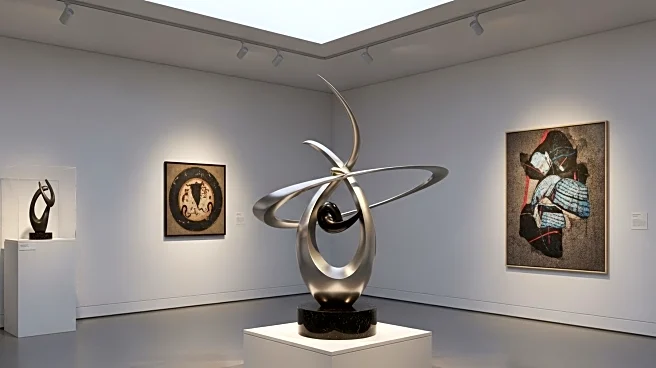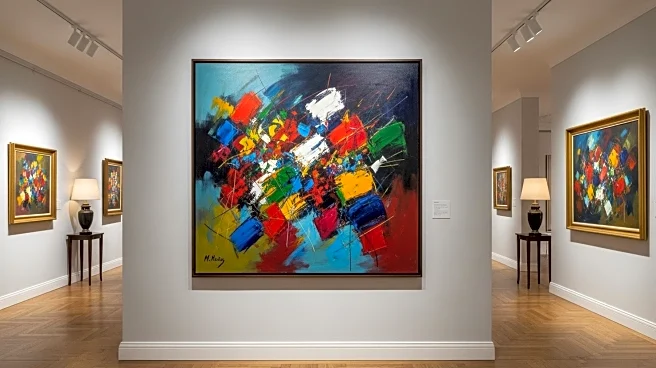What's Happening?
The Artnet Intelligence Report for mid-year 2025 reveals significant trends in the art market, with postwar and contemporary art remaining the most lucrative category, generating over $1.8 billion in sales. However, this represents a 12.7% decrease compared to the same period in 2024. The report also notes a contraction in the ultra-contemporary category, which saw a 31.3% drop in sales, totaling $117.2 million. Despite fewer lots finding buyers, the Old Masters category experienced growth, with sales rising by 24.4% to $289.5 million. This increase is attributed to Sotheby's securing the holdings of Thomas and Jordan Saunders, considered the most valuable Old Masters collection ever auctioned. Impressionist and Modern art sales also declined by 4.4%, bringing in $1.7 billion.
Why It's Important?
The decline in sales across several art categories indicates a cooling market, which could impact auction houses, collectors, and investors. The contraction in ultra-contemporary art sales suggests a shift in buyer interest or economic factors affecting disposable income for art investments. The growth in Old Masters sales, despite fewer lots, highlights a potential shift towards more traditional art forms, possibly driven by their perceived stability and historical value. These trends could influence future auction strategies and the valuation of art collections, affecting stakeholders in the art industry.
What's Next?
Auction houses may need to adjust their strategies to accommodate changing buyer preferences and economic conditions. This could involve focusing on categories with stable or growing demand, such as Old Masters, or innovating in marketing and sales approaches for contemporary art. Collectors and investors might reassess their portfolios, considering the long-term value and stability of different art categories. The art market's response to these trends will likely shape future sales and investment strategies.
Beyond the Headlines
The art market's fluctuations reflect broader economic and cultural shifts, including changing tastes and financial priorities among collectors. The decline in ultra-contemporary sales may indicate a reassessment of the value of newer art forms, while the growth in Old Masters sales suggests a renewed appreciation for historical art. These dynamics could influence cultural institutions and educational programs focused on art history and appreciation.
